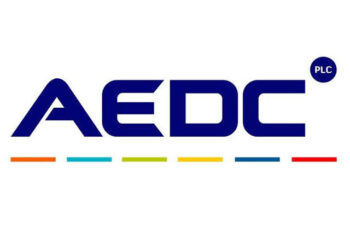U.S. oil production has topped 10 million barrels per day, approaching a record set in 1970, but many investors in the companies driving the shale oil revolution are still waiting for their payday.
Shale producers have raised and spent billions of dollars to produce more oil and gas, ending decades of declining output and redrawing the global energy trade map. But most U.S. shale producers have failed for years to turn a profit with the increased output, frustrating their financial backers.
Wall Street’s patience ran out late last year as investors called for producers to shift more cash to dividends and share buybacks.
“‘Give me some cash, please.’ That’s what investors have said,” said Anoop Poddar, a partner at private equity firm Energy Ventures.
And yet such calls for payouts remain a debate in the industry as oil prices have recently creeped up to four-year highs. Investors demanding immediate returns could risk forcing firms to curb expansion that could have a higher long-term payoff if oil prices continue to rise.
(For an interactive graphic charting the global impacts of the U.S. shale oil boom, see: tmsnrt.rs/2EtJgen )
For now, share prices of shale producers have yet to fully recover from the 2014 oil price CLc1 collapse, when many investors took losses as hundreds of firms went bankrupt and those that survived struggled.
The energy sector has lagged the rally that took the broader stock market to record highs. The S&P 500 Energy Index .SPNY remains nearly a third off its peak in mid-2014, when oil prices CLc1LCOc1 topped $100 a barrel. The broader S&P 500 index .INX is up 39 percent during the same period.
A Reuters analysis of corporate dividend disclosures shows a split in how shale firms are reacting to increased pressure from investors – and the impact on their market value.
This year, five of the 15 largest U.S. independent shale firms have started paying or raised quarterly dividends, the documents show. But six of the firms have never offered a dividend or have not restored cuts implemented since the 2014 oil price collapse.
Anadarko Petroleum Corp (APC.N) earlier this month added $500 million to an existing buyback program and raised its dividend by 20 percent, sending its shares up 4.5 percent the next trading day. Buybacks reduce the number of shares outstanding, boosting the value of stock that remains.
Shares in Pioneer Natural Resources Co (PXD.N) also rose 4 percent immediately after raising its dividend four-fold and posting better-than-forecast fourth quarter results earlier this month. Tim Dove, Pioneer’s chief executive, called the increase “a step toward our goal of returning cash to shareholders.”
Companies that have resisted boosting dividends, by contrast, have seen their valuations fall.
Of the six, shares in four – Cimarex Energy Co (XEC.N), Devon Energy Corp (DVN.N), Parsley Energy Inc (PE.N) and Noble Energy Inc (NBL.N) – have lost at least 19 percent in the last 12 months. Only one, Continental Resources Inc (CLR.N), is higher than a year ago.
Four producers, including Hess Corp (HES.N), kept dividends steady through the downturn.
A PASS FOR SMALL, HIGH-GROWTH FIRMS
Recent oil price gains have eased the pressure from shareholders.
In January, U.S. oil futures CLc1 jumped to $66.14 a barrel, up 56 percent from last year’s low and at a level not seen in four years.
Since then, prices have cooled to about $63 a barrel, but remain 17 percent above a year ago, boosting cash flow for firms that have expanded output.
“A lot of these smaller companies have gotten a pass for outspending cash flow due to their very high growth rates,” said Todd Heltman of asset manager Neuberger Berman, which invests in shale producers.
Shale output growth continues to outpace forecasts. The U.S. Energy Information Administration this month said United States production could top 11 million barrels per day by the end of 2018, a year earlier than it had expected just a month ago.
Heltman has pressed shale firms to show restraint even amid rising prices. And despite higher revenues, spending increases have so far been restrained.
Producers have pushed up spending plans for all of 2018 by 10 percent over last year, according to a tally of 41 of the 65 producers tracked by financial services firm Cowen & Co.
Some companies have maintained conservative assumptions for the average oil price for 2018, budgeting for prices between $50 and $55 a barrel.
A higher price will mean they can cover new drilling investments and still pay dividends.
Investors are searching for firms that can find the optimal balance between the conflicting goals of controlling costs, paying dividends and increasing production.
“We’re looking to invest in those companies who have been able to improve their production and win the battle as far as cost of extraction,” said Derek Rollingson, portfolio manager of the ICON Energy Fund (ICENX.O), which holds shares of more than a dozen U.S. shale producers.
A further rise in oil prices, however, could lead investors to take on more risk and penalize more conservative companies, said Mike Breard, an energy analyst at Hodges Capital Management in Dallas.
“If oil is $65 by Easter,” he said, “investors are going to go to the companies and say, ‘Why don’t you borrow more money and drill more wells?’”












